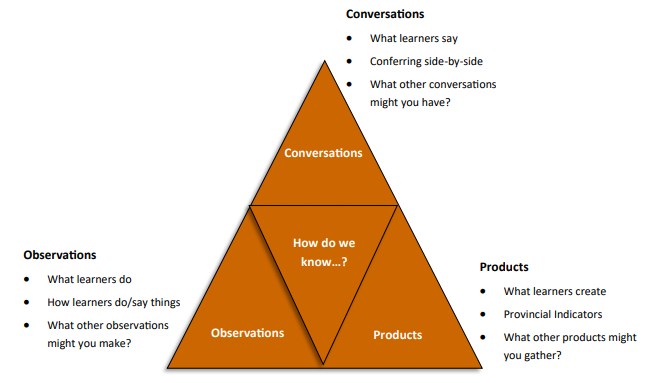
If you have watched any cable news or TV interviews since the pandemic changed what we consider ‘normal’, you’ve likely noticed the importance of backdrops, particularly, bookshelves. It’s not so much the shelves themselves, it’s the titles of the books and the artifacts on display that intrigue me. These high profile interviews are broadcast to, potentially, millions of viewers, a fact I’m sure is not lost on the hosts, nor the guests. When an individual prepares to answer questions on these programs I wonder what process they go through as they arrange their books and ‘props’. What message are they hoping this conveys?
How does this relate to what we do in schools on a daily basis? I recently listended to a podcast focused on student voice (found here: https://blogs.spiritsd.ca/letslearnsomething/) and I couldn’t stop thinking about the unspoken message kids keep sending us day after day. What are they telling us through their actions? Their inactions? Their words? Their silence? Their engagement? Their apathy?
I agree that inviting student voice into their learning is crucial and challenging at the same time. I also believe that sometimes we need to stop only listening with our ears, we need to listen with our eyes. Students bring their own personal ‘backdrops’ with them complete with their own ‘bookshelves’ full of messages, just as high profile individuals set up their bookshelves for their interviews on CNN, FoxNews, CBC, TSN, etc.
A recent story might clarify what I mean by this. This past week I had the opportunity to work with a teacher who was concerned about a student’s reluctance to write anything on an assessment piece that was to be completed in class. In their math class, teacher, @miss_saathoff noticed that this student had a very strong understanding of the concepts being discussed. She had seen him apply this understanding to solve questions and she had heard, in his words, evidence that he had a grasp on material being learned. The conundrum she was faced with was, why did this student not want to answer any questions on the assessment piece? Some people may think this student is stubborn or lazy or unprepared. She didn’t believe this. She was curious about the unspoken message that this student was sharing.
The conversation that grew out of this was incredible. The student happened to be in the school after the other students had left for the day (unspoken message?) so we decided to invite him into the conversation. What follows is a paraphrasing of the conversation:
- teacher: “hey -student- Mr. M. and I were just wanting to chat with you about how things are going in class.“
- student: “oh great, I’m in trouble aren’t I?”
- teacher: “no, no, not even a little. We just want to talk about the quiz we did today”
- student: “oh yeah, that”
- teacher: “yeah, Mr. M and I are trying figure out what’s up and figured you’d be a good person to ask”
- laughter
- Me: “so Ms. Saathoff is concerned because you didn’t try any of the questions. She’s confused by this because she has seen you knocking it out of the park with this stuff.”
- teacher: “yeah, you’ve been doing such great work. You really know your stuff here”
- student: “I guess”

This conversation went on for a while, and we discussed how teachers at our school rely on a triangulation of evidence. We talked about how we use observations, conversations and products. We showed this student the graphic shown here, and explained that right now the teacher had evidence through conversations and observations but that the student’s product didn’t ‘jive’ with what she had seen and heard.
Eventually our conversation led to his acknowledging that he doubted his ability and felt that it was safer to submit a blank document than submit something with work on it that might be wrong. He worried that if he made mistakes it would validate the story he had been telling himself for years. This conversation wrapped up with his committment to giving it a try the next day at school, which he did. This led to another conversation with the teacher who made a point of seeking me out on Friday afternoon to share the work the student had done. She was beeming! The student provided a lot of evidence of learning on this product and the teacher could also see where more learning needed to occur.
All of this because the teacher took some time to look beyond the assessment piece, beyond the student and instead focus on his ‘bookshelves’ that were on display. She then took the time to ask why in a caring way. No judgement, just curiosity borne out of compassion. It was an incredible process to be a part of.
So what do you think? What messages are your students sending you? How do you hear the unsaid? See the unshown? Do you have the mindset that all students would show you what they know if they felt safe and confident, or do you believe kids who refuse to ‘do their work’ are just lazy and/or insubbordinate?
Reflecting on all of that, now think about the unspoken messages you send everyday to those kids. After all, we all have our own ‘bookshelves’.